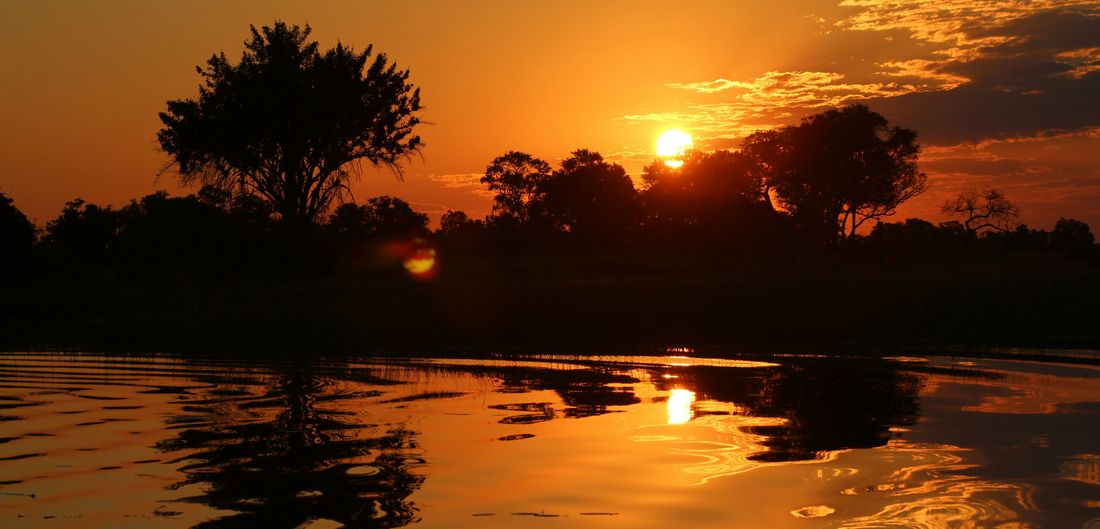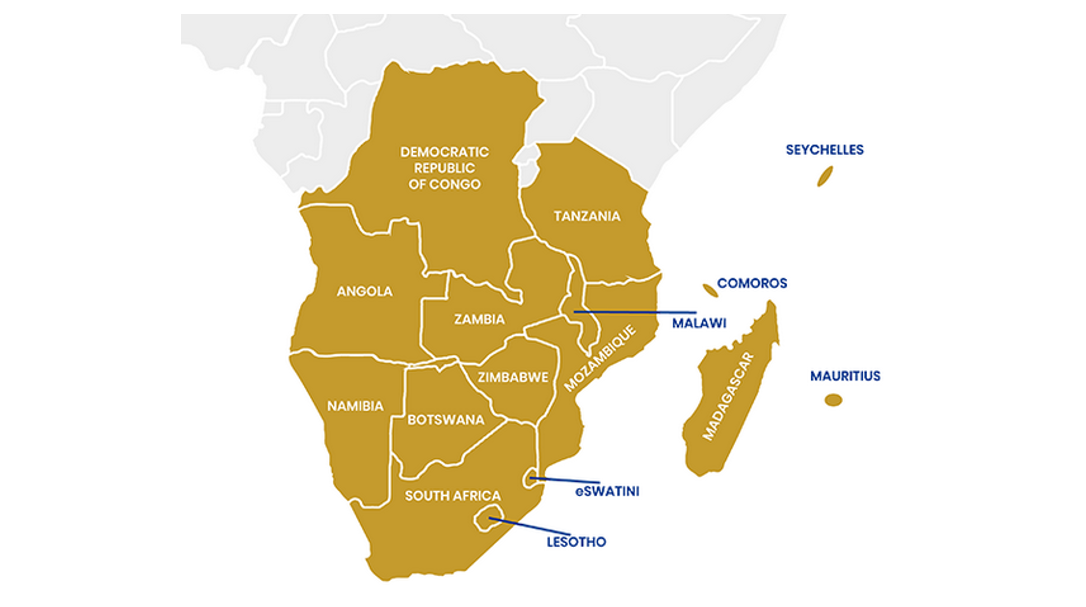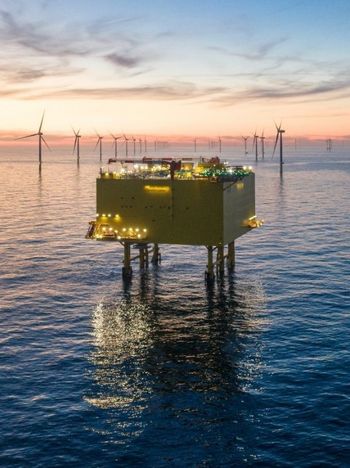Experiences in Southern Africa of Extreme Weather Events
by CIGRE Southern Africa Women in Energy Net Zero Initiative Team
Neo Mapapanyane (South Africa), Mantsie Hlakudi (South Africa), Themesha Khan(South Africa), Nonhlelo Mathunjwa (eSwatini), Krystle Annamalai (South Africa), Amina Lucilia Jamal (Mozambique), Mokgadi Malefafana (South Africa), Aradhna Pandarum (South Africa), Keshia Ramith (South Africa), Sanet Smit (South Africa)

Tembisa is a well-known township community in Johannesburg, South Africa, where one of the authors grew up in a home next to dumpsites. Waste was deliberately burned to free up space at these dumpsites because of inadequate governmental waste management. This intoxicated the environment due to the process of burning materials such as garbage and plastics, resulting in toxic chemicals emitted into the air. Her family decided to turn the dumping ground into a garden where they produced morogo [1] to feed their family. It was not long after that, that their neighbours started buying the same morogo to feed their families too. We are reminded of this by another such community (Alexandra community) in Johannesburg, where there is a community garden from an old dumping ground that created jobs for people in that community [1]. There are now many other townships in South Africa where this practice has become a norm.
With climate change challenges being faced in Southern Africa, not everyone will be able to adapt. In reality, it’s survival of the fittest, and those in risk-prone areas and living in poverty are the most vulnerable. Furthermore, poverty is not restricted to people living in rural areas, but also those in urban areas. Urban poverty is a harsh reality. For example, every day, we see waste pickers pushing trolleys which they use to collect recycling waste such as papers and bottles. Some of these people sleep under bridges and on the streets, and they also feel the effects of climate change. We see people in absolute poverty on the streets in the central business districts (CBDs) of large metropolitans such as Pretoria and Johannesburg, and they too are trying to make a living while also trying to adapt to climate change.
This imposes a sense of responsibility on each one of us to enhance our resilience to the impacts of climate change, in a way that improves lives and livelihoods for all. Furthermore,the sooner we act, the better our chance to succeed will be. We need to make provisions and changes to ensure that we are moving toward a Just Energy Transition (JET). Energy production is among the root causes that affect climate change because it increases greenhouse gas emissions [2] thus requiring an energy transition as soon as possible. The transition however, has to be just and equitable so that no one is left behind.
In the context of the above, people globally are feeling the social, economic, and environmental impacts of climate change and Africa and the SADC region in particular is not an exception. In Africa alone, 118 million people will be affected by climate change by 2030 [3] with the continent being the most vulnerable to climate change [4]. The Southern African Development Community (SADC) comprises of 16 member countries which are located in the southern part of Africa [5], as shown in Figure 1. Africa is between the Indian (east) and Atlantic (west) oceans. Stories shared in this article cover the experiences of Cigre SA WiE NZI members that live in some of these SADC communities.

Figure 1 - The countries that form part of the Southern African Development Community (SADC) [5]
From the east, Tropical Cyclone Idai (as indicated in the rainfall map from Figure 2), made landfall in Mozambique in 2019, and had devastating impacts, with approximately 900 deaths [6]. It is believed by climate experts, that the Tropical Cyclone Idai was deepened by climate change as warmer air and sea surface temperatures made more energy available for the cyclone [7]. The transmission line from Mozambique to South Africa was damaged by the cyclone [8]. As a result of the damage, a loss of 1100 MW of power was experienced, and this led to load-shedding to protect the power system.
Looking at statistics in the aftermath of an extreme weather event paints a picture of the scale of the devastation it leaves in its wake. However, it does not do justice to the despair, fear and sheer need for survival that those experiencing the actual torrential downpours, flooding, gale force winds and fires go through.
When the floods hit eThekwini (metropolitan municipality of Durban, South Africa), another member of the team of authors and her family were afraid to even go to sleep. The rain continued to pelt down, and it felt like it would only be a matter of time before water would start entering their home.
Tragically, others were not as fortunate; rivers swelled beyond their banks’ capacity, sweeping away with it people and riverside homes. Bridges and roads were washed away. Critical electricity, water and sewage infrastructure suffered millions of rands of damage, and most heart-wrenchingly, more than four hundred people lost their lives.
On 11-12 April 2022, the eastern coast of the provinces KwaZulu-Natal (KZN) and Eastern Cape (EC) in South Africa witnessed exceptionally heavy rainfall of more than 300mm in some areas within less than 24 hours. The loss of life, infrastructure damage and destruction of homes by the havoc-wreaking floods resulted in the government declaring a national state of disaster [9]. The extreme rainfall left the city of Durban in eThekwini Municipality and its people reeling in its aftermath.
According to the South African Weather Services [10], the event was caused by a cut-off low that diverged from the mid-latitude westerly wave and tracked across the east coast and interior of South Africa. Cut off lows in the above region, as in other regions, can cause severe weather, heavy rainfall events and floods and are a common occurrence in the month of April in the region. The impact from the 11-12 April was additionally exacerbated by moisture-laden, low-level maritime winds from the Southern Indian Ocean.
Subsequent to the event, the World Weather Attribution Initiative, which is a collaborative effort of climate scientists from around the world, performed an analysis of the extreme rainfall experienced [11]. Their findings were based on climatic modelling. One of their key findings was that the defined event had a return time of about 20 years in today’s climate. An event of this magnitude would have been rarer in a 1.2°C cooler world, with a return time of about 40 years. They also concluded that the the intensity of the April disaster had increased by 4-8%.
While South Africa as a country was still recovering from floods that caused mayhem in the Eastern Cape and KwaZulu Natal provinces, another disaster struck Gauteng Province in December 2022.
Heavy rainfall caused damage to power supply substations, roads, bridges, and houses in Soweto, West Rand, and flooded the Jukskei River in Alexandra, Johannesburg, leaving residents in an informal settlement on the riverbanks with not only anguish for their lives and livelihoods but also anxiety about a place to live and get food.
The building materials and designs of informal settlements put people’s lives in danger, especially children who generally play near the river. It was reported that people went missing after they had been washed away during the heavy rain. Among those were church members who went to the river to perform religious ceremonies. A rescue team was sent out to search for the missing persons and they recovered some of the bodies and continued searching for the rest [12].
It was reported that the amount of rainfall, which lasted at least over 48 hours, would not have been enough to cause flooding, so no warning was given out to residents. It was then concluded that the water that came from upstream, caused by the heavy rainfall, resulted in the unfortunate incident [13].
As women, we are vulnerable and significantly affected by the effects of climate change, which also makes us a key to solving the climate crisis [14]. We need to become climate leaders who create a voice for the millions of women that are adversely affected by climate change. In terms of the after-effects and economic and health impacts, women are suffering disproportionately. Our next generation depends on our successes in addressing the climate crisis and supporting our countries’ development whilst ensuring the process is just and equitable for all.
References
- S. A. Bhayla, "SOCIAL CAPITAL IN COMMUNITY FOOD GARDENS IN ALEXANDRA JOHANNESBURG," University of Witwatersrand, Johannesburg, 2020.
- L. Meyer, R. Pachauri and Intergovernmental Panel on Climate Change, "Climate Change 2014 Synthesis Report," Intergovernmental Panel on Climate Change, Geneva, 2014.
- U. N. Team, "UN News," 18 October 2021. [Online][Accessed 31 January 2023].
- R. Washington, "BBC News," 15 December 2019. [Online][Accessed 31 January 2023].
- "SADC Member States," 2022. [Online]
- US Aid, "Southern Africa - Tropical Cyclone Idai - Fact Sheet #5 FY2019," 2019. [Online]
- M. Warren, "Why Cyclone Idai is one of the Southern Hemisphere’s most devastating storms," 2019. [Online]
- SABC News Online, "Stage 4 loadshedding continues on Sunday," 2019. [Online]
- SA Government, "News," 18 April 2022. [Online]
- K. Rae, "Weather SA Media Releases," 12 April 2022. [Online]
- I. Pinto, "Climate change-exacerbated rainfall causing devastating flooding in Eastern South Africa," 13 May 2022. [Online]
- L. Solomons, "News24," News24, 17 December 2022. [Online][Accessed 29 January 2023].
- M. Banda, "Daily Maverick," 6 December 2022. [Online][Accessed 29 January 2023].
- L. J. Schueman, "Why women are key to solving the climate crisis," 2022. [Online]
Banner & thumbnail credit: Andy Robson on Unsplash
- [1] Any of several species of edible leafy plants, traditionally cooked and eaten as a vegetable by people of Africa, also called imifino and wild spinach.



